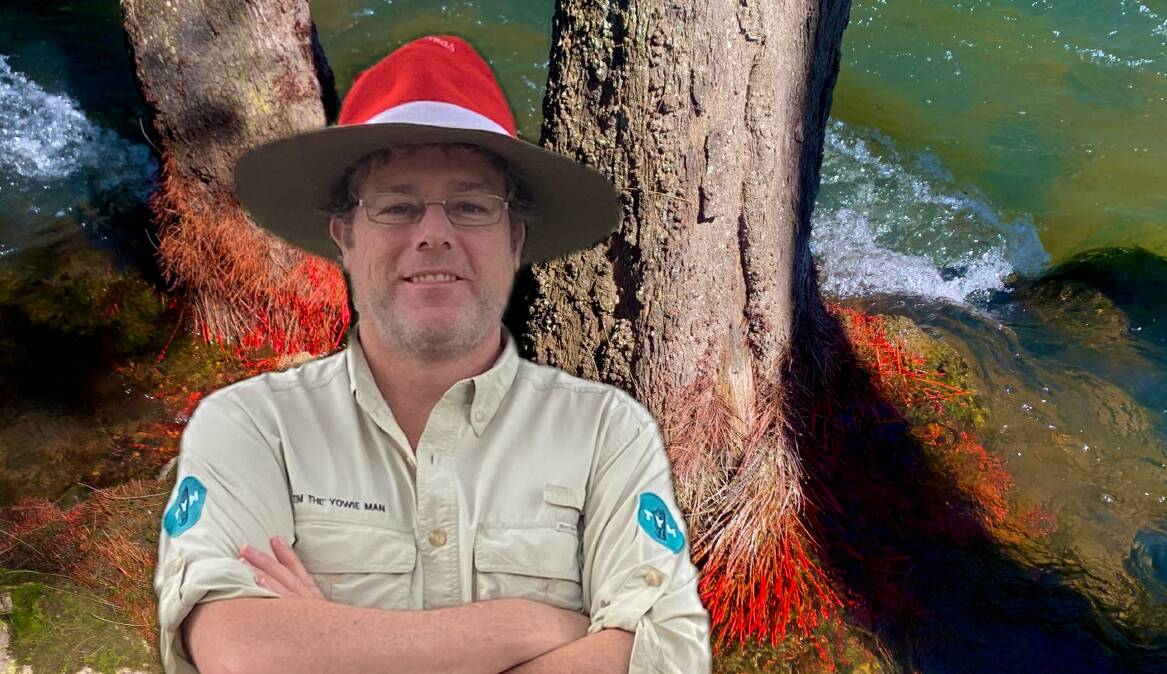
There's a handsome large gum tree in the front yard of a house near the end of my street that around this time every year the owners tie a giant red ribbon around.
For our neighbourhood, the appearance of the ribbon heralds the start of the festive season.
In fact, in recent years, decorating suburban trees with cheerful red ribbons has become a popular alternative to Christmas lights. And this year, it seems that dozens of trees at the Cotter don't want to miss out on the Christmas spirit.
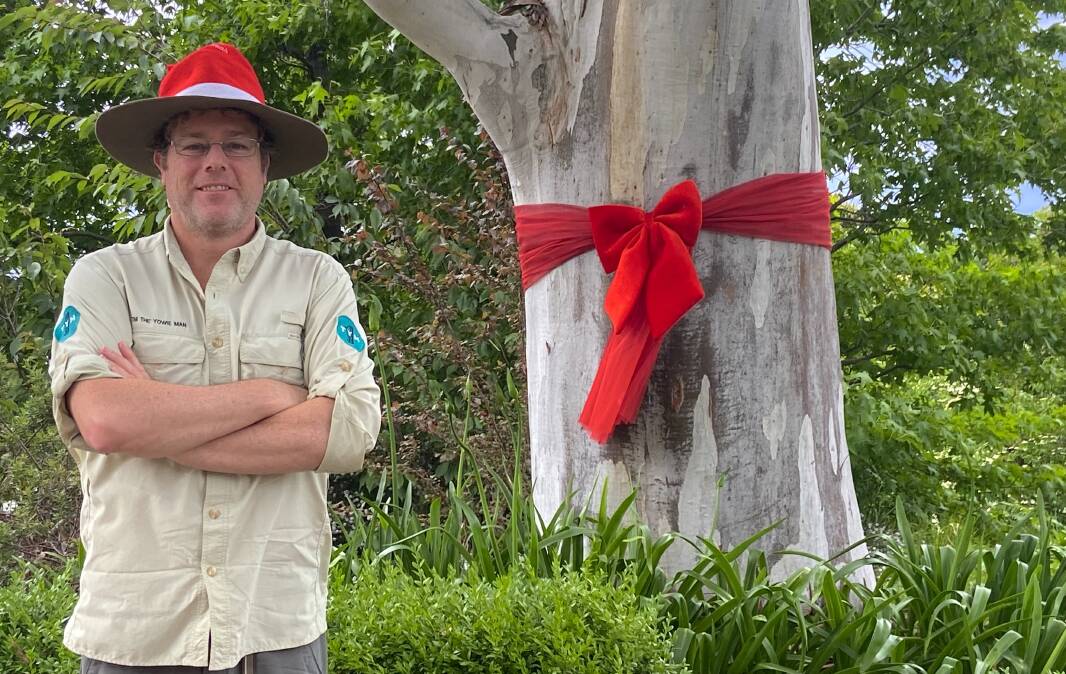
My inbox has been filling with reports that many casuarinas (Casuarina cunninghamiana) along the Cotter River, just downstream of the dam wall, are turning a bright blush of red. And it's turning heads. In fact, over the last couple of warm weekends, bumper crowds attending Christmas parties along Cotter Avenue have been enamoured by the colourful trunks.
But what's causing it?
Well, when the National Parks Association of the ACT recently posted photos of the phenomena on its social media, it prompted some of its followers to wildly speculate about its origins. "Bunyip eggs" claimed one person!
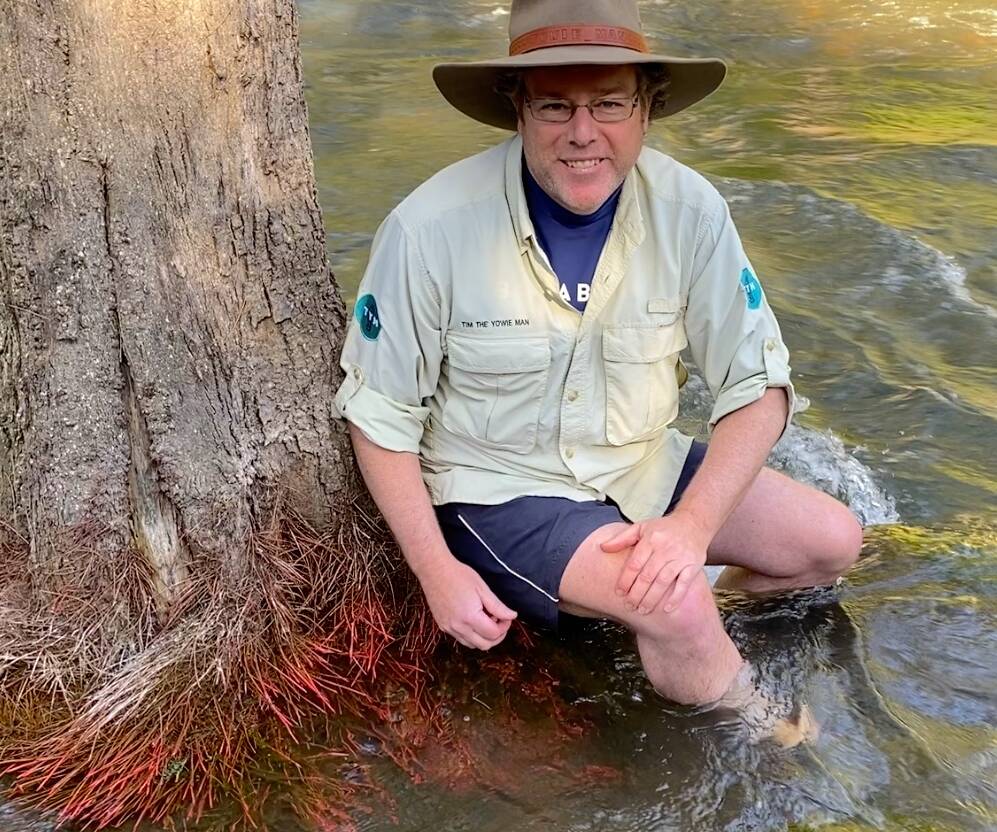
Of course, the explanation has nothing to do with swamp-dwelling creatures from Aboriginal mythology, nor Santa for that matter, but the scientific reason is equally as fascinating.
The vibrant-coloured strands are actually aerial roots (also called adventitious roots) and are the result of sustained high river flows due to our recent big wet.
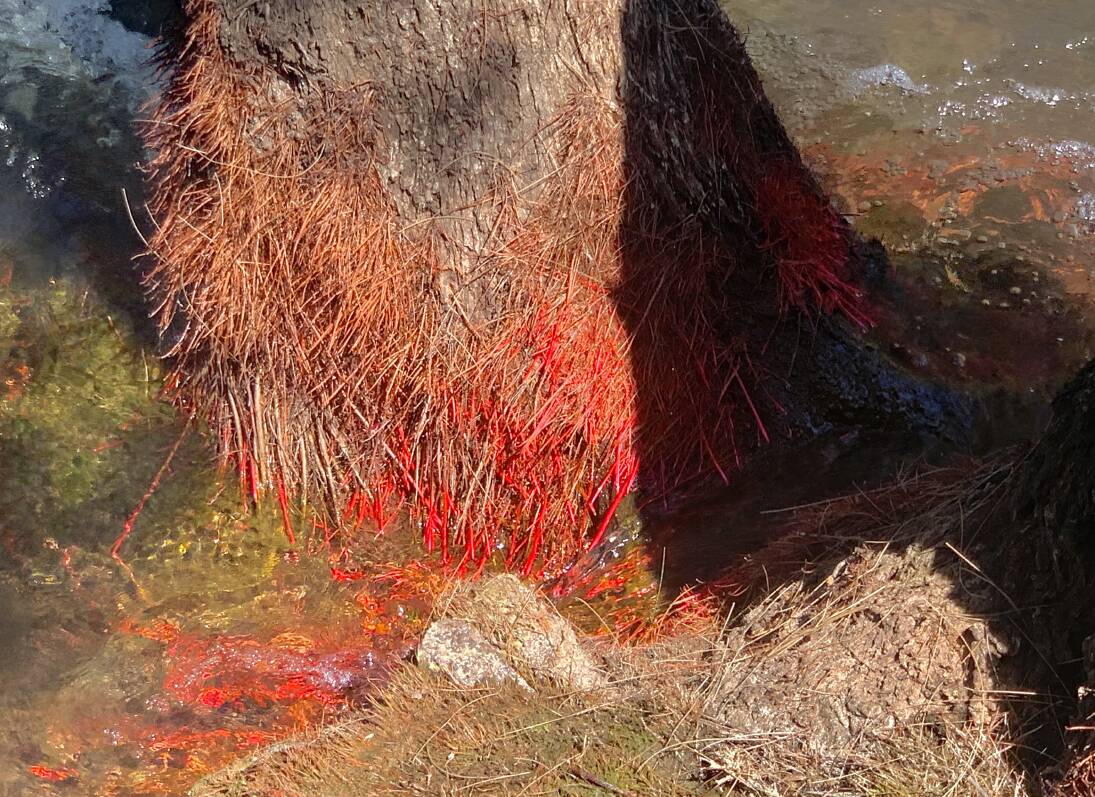
University of Canberra aquatic botanist Dr Jane Roberts says she's only seen the aerial roots on riparian trees in northern New South Wales, "but that's probably because I happened to be there after a sustained but minor flood".
If you haven't seen them before, join the club. "We don't have floods often enough for people to be much aware of them in Australia, let alone study them," says Dr Roberts. "It's nice to have such an observation about Casuarina cunninghamiana." It sure is.
While there are very few references in scientific literature of the phenomena occurring in casuarinas, growth of aerial roots in other species - including river red gums and river paperbarks - does receive a passing mention in Riverine vegetation of inland south-eastern Australia (CSIRO, 2016).
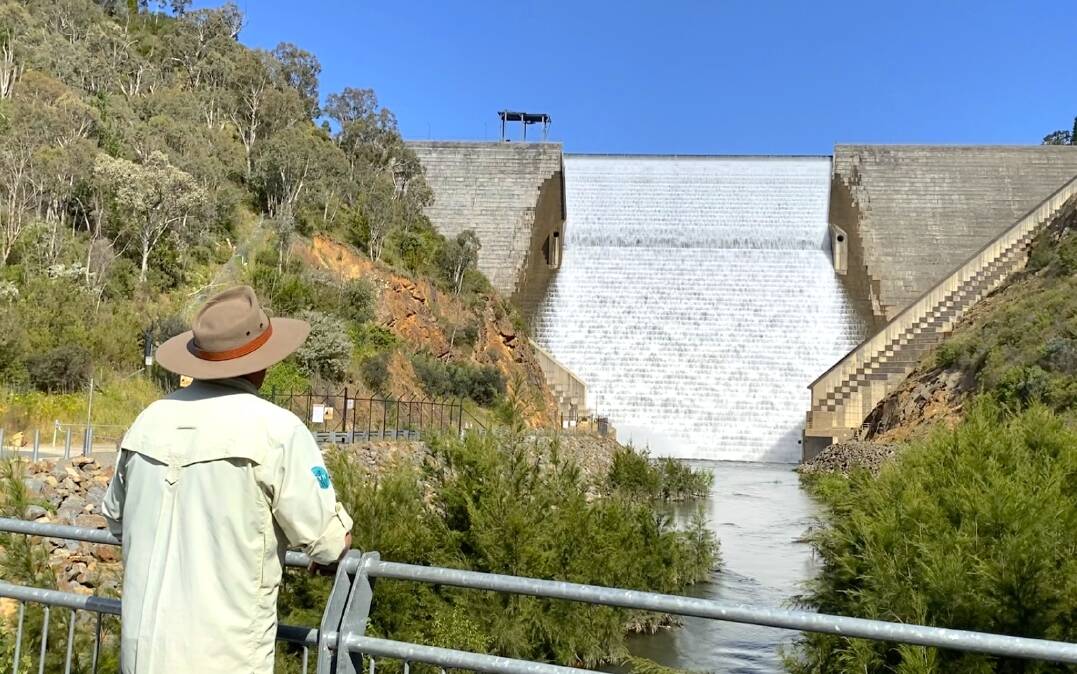
In a chapter co-authored by Dr Roberts, it's stated that flooding of some trees growing in riverine habitats can adversely affect their growth, and if sustained, can threaten plant survival.
"If flooding is deep enough to submerge some of the above ground parts, then plant metabolism (photosynthesis, respiration) is negatively affected, and growth arrested. Trees can survive periods with depleted or no oxygen in the rhizosphere by increasing oxygen supply to the roots, and this can be achieved by increasing oxygen through the development of adventitious roots from a trunk or branch while submerged..."
Mystery solved.
However, if you want to catch the spectacular splash of colour at the Cotter, be quick. As river levels drop, these aerial roots will "die and eventually disintegrate".
Hopefully at least some will last until the fat man arrives on December 25.
Have you seen other trees in the Canberra region sprouting aerial roots to survive the big wet?
Fiery Flight

There has been lots of correspondence regarding this column's recent exposé on the 1931 crash of the Southern Cloud but none more harrowing than a letter from Vikki McDonough of Curtin which I present here in its entirety:
Your column evoked memories of what felt like a near miss aviation incident in the Australian Alps, that I was involved in.
On 4 January 2020, I was returning home from a trip to Western Australia. My husband and I had gone to Fremantle for the birth of our first grandchild and to spend Christmas with our daughter and family.
For days we had been gripped by news coverage of the fires along the east coast - 18 members of our family were holidaying in the Batemans Bay area.

And then there was the situation unfolding on Kangaroo Island where our son lives and works.
Anyhow, mid-way through the final leg of our journey home, between Melbourne and Canberra we saw the pyrocumulous clouds [formed by a rising column of hot air coming off fires] rising from the fire grounds in the Kosciuszko National Park below - hard evidence of all that we'd been hearing about and watching on our screens.
But our interest quickly turned to terror as the sky outside became deep orange and we were plunged into total blackness, the cabin filling with the acrid smell of bushfire smoke.
Within seconds the plane began to fall from the sky again and again, and my husband and I sat silently holding each other's hands.
Somehow, amazingly the pilots regained control and pulled us up out of the blackness.
And eventually we landed in Canberra, everyone clapping when we touched down, greeted by emergency services personnel.
With the Southern Cloud, the pilots had no radio system to inform them of the changing weather conditions.
In our situation, the pilot stated the radar system had no way of detecting the smoke and ash cloud before we were in it.
Getting out of that plane felt like a miracle to me - but I've always wondered just how much of a near miss was it?
Simulacra Corner
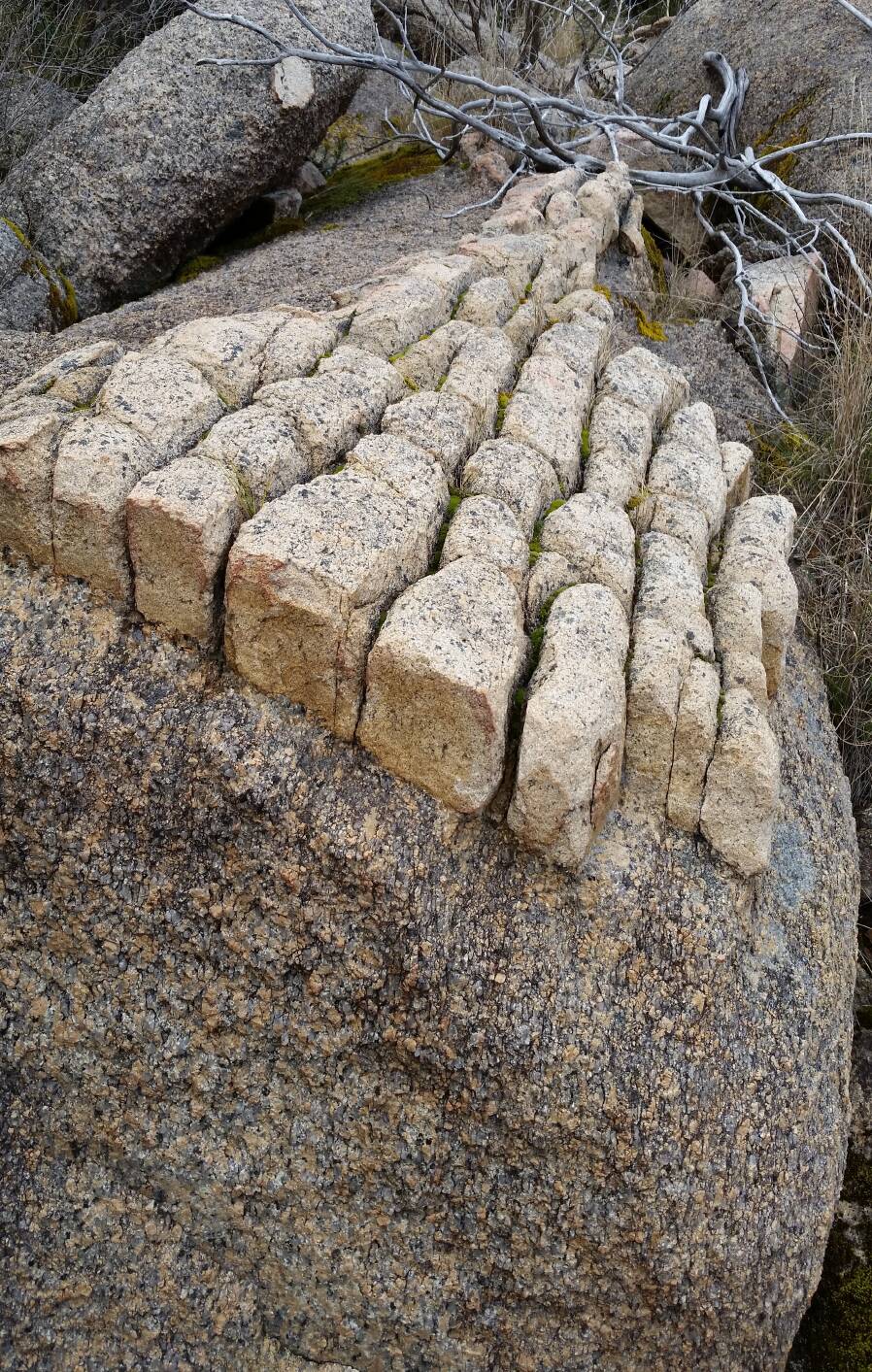
On a recent walk near Booroomba Rocks in Namadgi National Park, several bushwalkers were amazed at the sight of this eroded rock formation. "A baker's two dozen loaves, complete with poppy seeds on top" exclaims Jenny Horsfield of the Canberra Bushwalking Club. Geologically speaking, I'm reliably informed the "loaves" are likely remnants of an aplite vein left after the top layer of granodiorite has eroded. Mmm, it doesn't sound as tasty now!
Spotted! Readers report quoll sightings
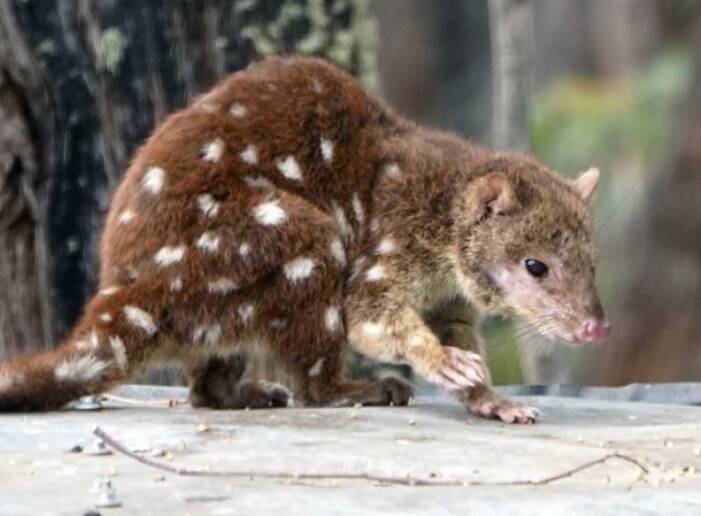
While confirmed sightings of spotted-tailed (also called tiger) quolls in and around Canberra are far and few between, several readers believe they've spotted one.
Allan Scroope says he saw one on Isaacs Ridge about 18 months ago. "I wasn't quick enough to take a photo, but it was definitely a quoll," reports Alan. "It was an adult that moved quickly, disappearing into its den."
Maureen Lynnette reports her father "caught a male tiger quoll at Burra many years ago".
"The quoll started climbing the fence of the chook yard at night and dad grabbed it behind the neck and in front of the back legs. He then put it in the guinea pig cage overnight and went back to bed. In the morning we saw how sharp his teeth were," she recalls.
Heck, I hope there weren't any guinea pigs in the cage at the time.
Maureen's dad ended up sending the quoll to Eric Worrell's animal park on the Central Coast of NSW "where they needed a male for their breeding program".
Meanwhile, Christina Steele of Captains Flat who reckons "quolls are awesome", notes "we have some a small population around here, but I've only ever seen one when I was driving at night up near Tallaganda".
Finally, Owen Davis and Karen Davidson who live on the edge of Byadbo Wilderness south of Jindabyne, a stronghold for the species, regularly capture images of quolls on their camera traps.
Owen reports he came "face to face, nose-to-nose with a cheeky one in the shed a couple of months back. I dropped something in the shed and bent down to pick it up and eyeballed the quoll looking at me - it must be living in the shed".
"When you are standing there watching one going through your garbage bin, they are a sight to behold," says Owen.
Where in Canberra?

Rating: Easy - Medium
Cryptic Clue: Talk about turning the full circle
How to enter: Email your guess along with your name and address to tym@iinet.net.au. The first correct email sent after 10am, Saturday December 10, wins a double pass to Dendy, the Home of Quality Cinema.
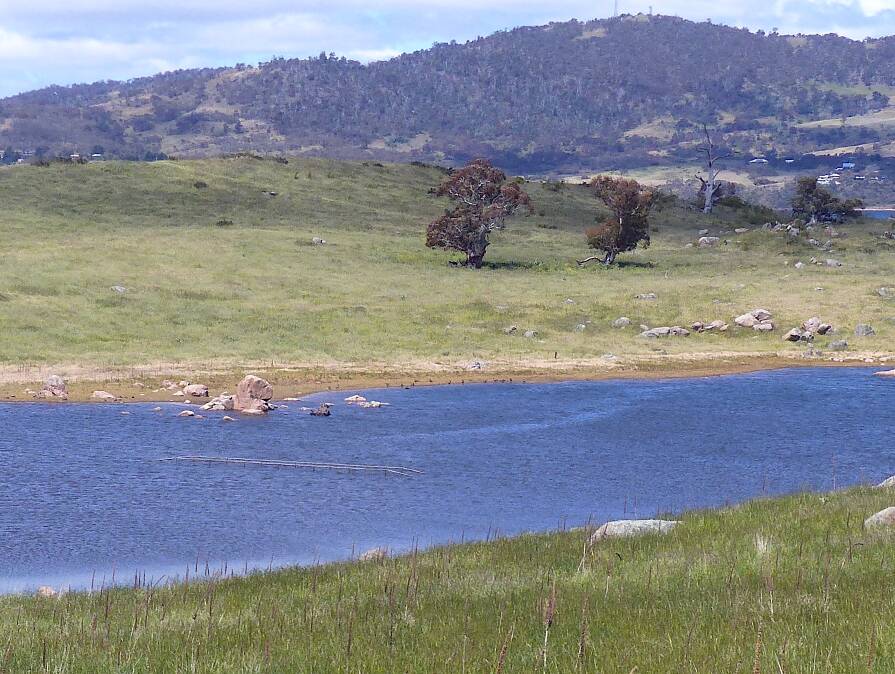
Last week: Congratulations to Bill Euston of Jindabyne who was the first to correctly identify last week's photo as a partly submerged footbridge across the Wollondibby Creek near where it flows into Lake Jindabyne. The clue of "not far from a curious attraction, also flooded" related to nearby Curiosity Rocks, which, but for the tip of the top rock, are also submerged.
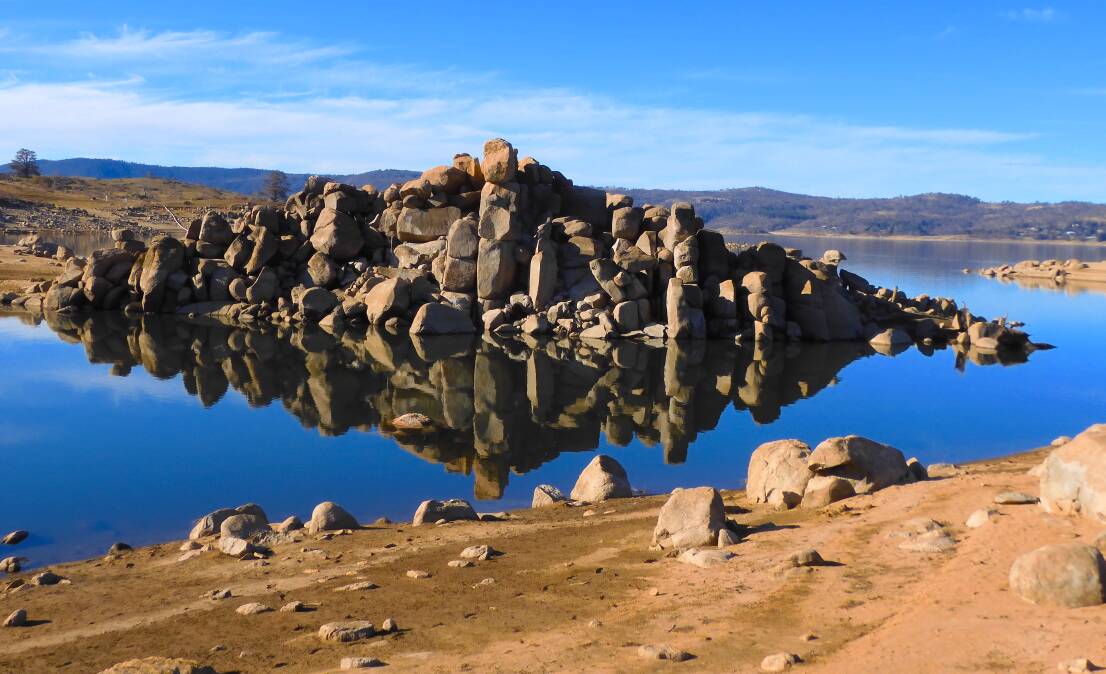
Bill also sent these photographs which show Curiosity Rocks in August 2020 when Lake Jindabyne was at 53 per cent capacity, and last weekend, during an afternoon sailing race when the lake was 96 per cent full.
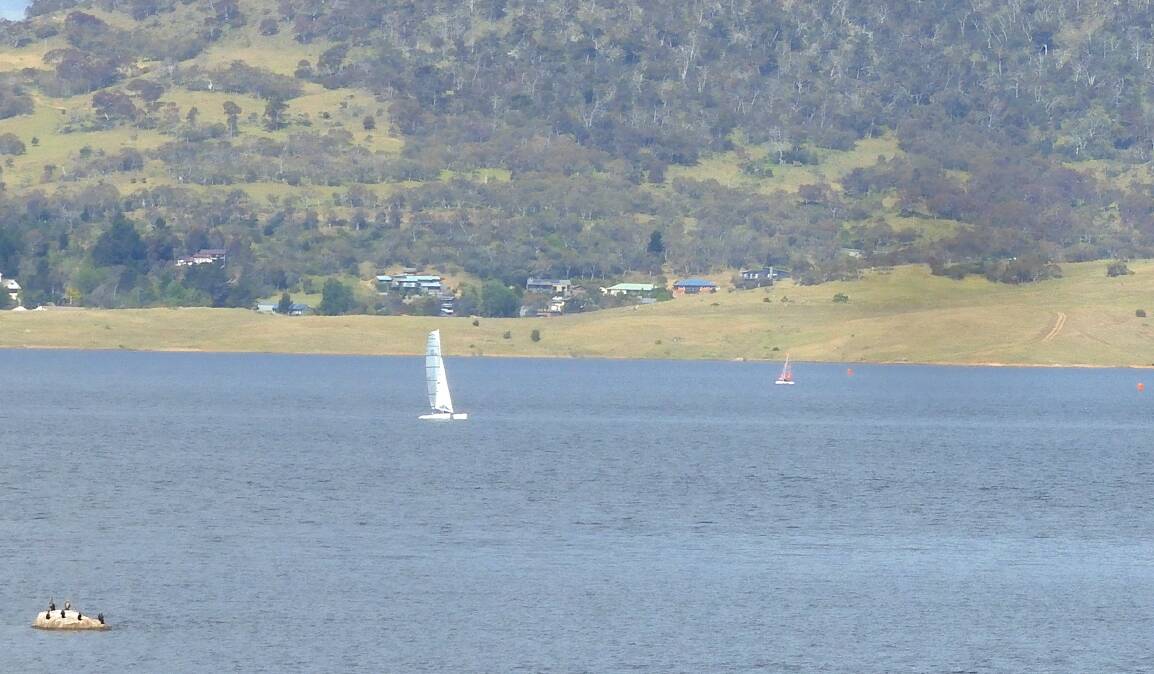
Did You Know: In 2017, Curiosity Rocks was declared a protected Aboriginal Place under the National Parks and Wildlife Act. It is recognised as a culturally rich, spiritual place that has a direct line of sight to Kalkite Mountain, which is sacred to the Ngarigo People.
CONTACT TIM: Email: tym@iinet.net.au or Twitter: @TimYowie or write c/- The Canberra Times, GPO Box 606, Civic, ACT, 2601.
We've made it a whole lot easier for you to have your say. Our new comment platform requires only one log-in to access articles and to join the discussion on The Canberra Times website. Find out how to register so you can enjoy civil, friendly and engaging discussions. See our moderation policy here.







